Revenue Growth: How to Calculate It + Proven Strategies
Casey O'Connor
Revenue growth is a measure of how quickly your business is expanding in terms of revenue.
In virtually any period of a business’ lifetime, from startup to enterprise, it can be challenging to know which factors drive growth and profitability. Focusing on revenue growth can help companies figure out what to prioritize as they expand their operations and bring in more money.
In this article, we’ll go over everything you need to know about revenue growth, including what exactly it is, why it’s so important for businesses at any stage, how to calculate it, and some proven strategies.
Here’s what we’ll cover:
- What Is Revenue Growth?
- Why Is Revenue Growth Important for Business?
- How to Calculate Revenue Growth
- Proven Revenue Growth Strategies
- Revenue Growth Metrics and KPIs
- Revenue Growth FAQs
What Is Revenue Growth?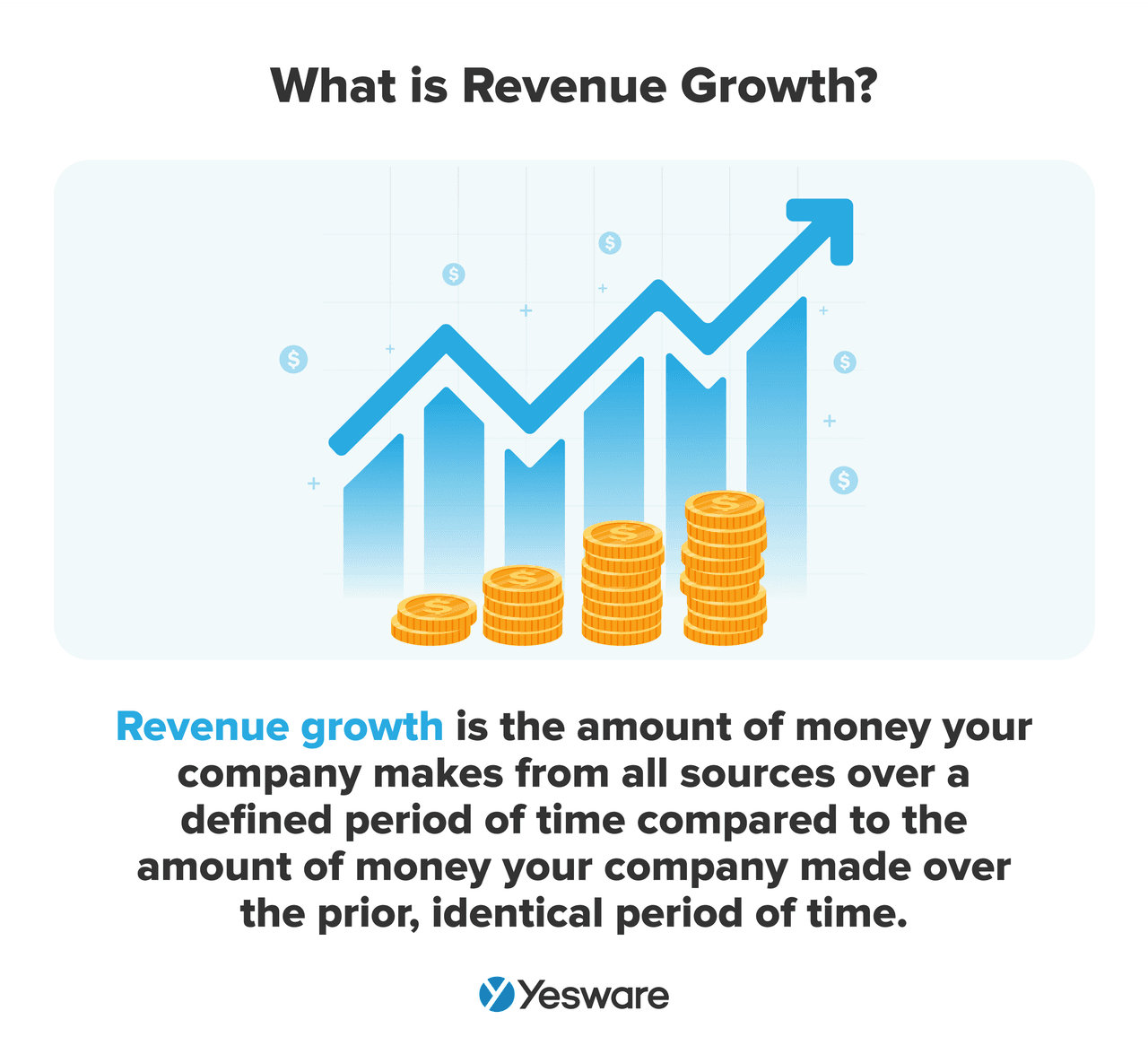
Revenue growth, in technical terms, is the amount of money your company makes from all sources over a defined period of time compared to the amount of money your company made over the prior, identical period of time.
More simply put, revenue growth is how much money your company brought in last month (quarter, year, etc.) versus this month (quarter, year, etc.). Usually, companies find it most beneficial to calculate their revenue growth year over year (YoY) or quarter over quarter (QoQ).
Revenue vs. Sales and Earnings
It’s important to note here that revenue is different from sales and earnings, even though many people confuse the terms or use them interchangeably.
Revenue represents all of the money a company brings in from all sources, including sales, fees, investments, royalties, and more. It doesn’t factor in expenses — only income.
Sales is a subset of revenue; it represents the money a company brings in solely from sales.
The term “earnings” is the only one of the three that takes into account expenses. A company’s earnings are calculated by subtracting their expenses from their revenue.
Another key difference between the three is that sales and earnings are usually more goal-oriented, whereas revenue growth is less of an end goal and more of a strategy towards a goal.
Why Is Revenue Growth Important for Businesses?
Tracking revenue growth can be beneficial for companies of any size.
A Pulse on the Health of Your Business
When companies track their revenue growth, they gain insight into a number of different areas of their business: sales, customer acquisition, customer success/retention, human resources, marketing, finance, and more.
Revenue growth offers a very accurate snapshot of the health of a business and offers a much more holistic view of a company’s progress than a single month’s revenue.
More Important Than Earnings
Some companies get too hung up on earnings growth when in reality, revenue growth is a better long-term strategy.
Most earnings growth stagnates at minimal because it revolves around cutting costs, which is really only temporary and effective in the short term. For truly scalable, sustainable growth, companies need to focus on revenue growth as well.
Informative for Investors
Revenue growth data can be extremely useful in persuading investors to provide capital for your growing business.
Revenue growth helps provide valuation for investors, and can help them gauge how likely a startup or otherwise young business is to succeed long-term. Solid revenue growth indicates potential for solid long-term scalability and growth (which translates to a healthy ROI for investors).
At the end of the day, the main goal of any business is to make a profit. Revenue is the primary contributor to profit. Without revenue growth, even a company that’s making all of their expenses back is doomed to eventually fail.
How to Calculate Revenue Growth
Calculating revenue growth is actually very simple, once you’ve defined the time period you want to analyze.
All you need to do is choose a clearly-defined time period (usually a quarter or a year) and measure the revenue from that period. Then, measure the revenue from the following period of identical timeframe.
Subtract the previous period’s revenue from the current period’s revenue, then divide the difference by the previous period’s revenue.
You can multiply that number by 100 to see your revenue growth in percentage form.
The most important thing to remember when calculating revenue growth is to ensure that your time periods are of identical length.
Revenue Growth Formula

Proven Revenue Growth Strategies
A revenue growth strategy is a specific plan that outlines how sales, marketing, and customer success teams will work together to increase revenue in the short term and the long term.
The key to continued success with any revenue growth strategy is the alignment of your marketing, sales, and customer success teams; without the collaboration of these three departments, your strategies will be ineffective at best.
Remember, consistent, scalable revenue growth may take time to generate and become predictable. Many startups, for example, experience exponential revenue growth for a period of time, before it plateaus and possibly even eventually dips before evening out again.
The point of this metric is to take a bigger-picture view of the health of your operations. Small dips in revenue growth can be very informative and helpful in the long run, if teams know how to analyze the metric and capitalize on their insights.
All of the following revenue growth strategies are considered “organic growth” strategies, with the exception of the last one (mergers and acquisitions). Organic growth strategies are generally slower to generate results, but also safer to implement.
1. Invest in Your Workforce
There’s perhaps no better way to improve your revenue growth than to influence the people who are directly responsible for it: your employees.
Impressive revenue growth starts with the performance of your team, so it should come as no surprise that giving them the resources they’re due can go a long way in bringing in more bucks.
Work to create a culture of collaboration, trust, and empathy among your team. Reward productive work and outstanding results frequently, publicly, privately, and with tangible incentives. Offer regular professional development, and hire as needed instead of overextending your team.
Employees who are engaged provide a number of benefits to your organization, so investing in this foundational component of your revenue growth is crucial to its success (even beyond revenue growth). 
2. Find Ways to Reach New Customers
If revenue growth is all about bringing in more money this period than last, it’s pretty straightforward to assume that attracting new customers from previously untapped sources could potentially help with that goal.
As you work to increase your revenue growth, think outside the box from what you’re already doing for lead generation.
Expand your outreach by planning new marketing strategies; more and more sales and marketing teams are using strategies like content marketing, email campaigns, and social media or other paid advertising to reach new customers in new ways.

2. Upsell and Cross-Sell Existing Customers
Did you know that it costs five times as much money to acquire a new customer as it does to sell to an existing one?
And did you know that existing customers are 60% – 70% more likely to purchase than new ones?
With those stats in mind, you might also want to consider stepping up your upselling and cross-selling efforts. 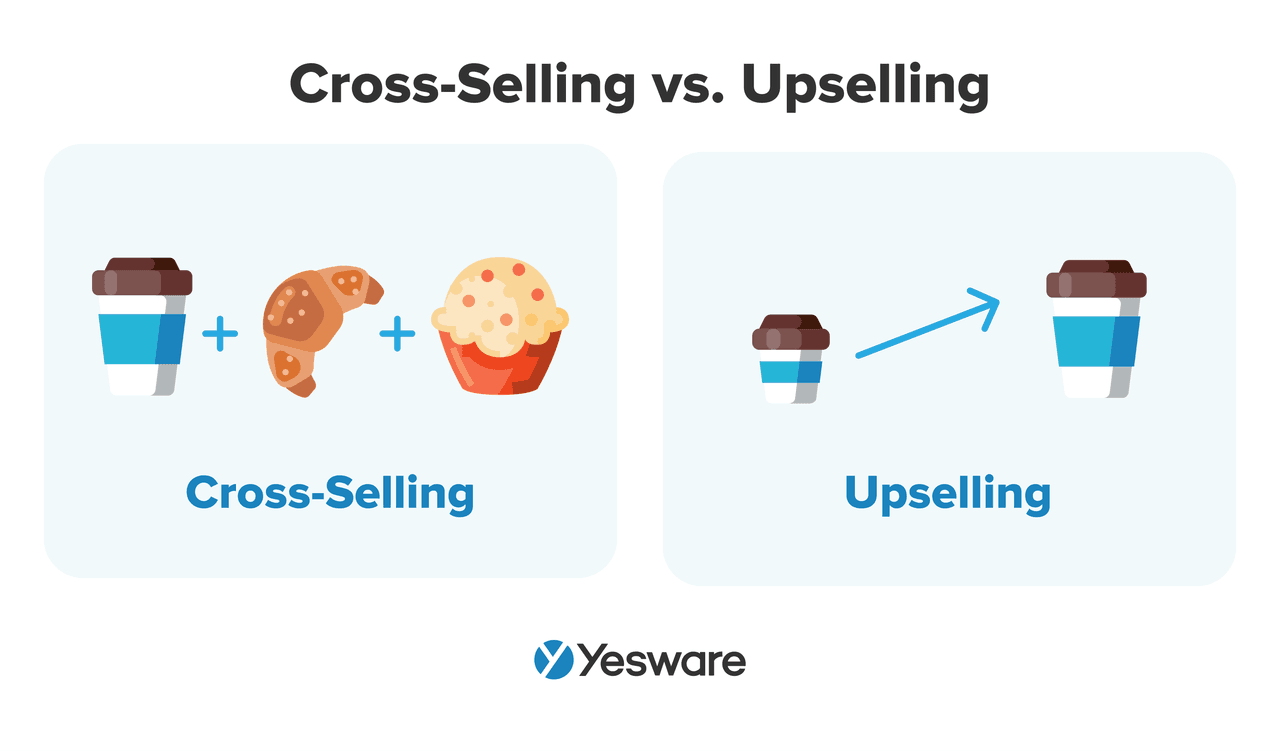 Research shows that even companies with low levels of cross-selling and upselling still bring in a non-negligible amount of revenue (up to 6%) from selling to existing customers, with some reporting a nearly 45% increase in revenue from the practice.
Research shows that even companies with low levels of cross-selling and upselling still bring in a non-negligible amount of revenue (up to 6%) from selling to existing customers, with some reporting a nearly 45% increase in revenue from the practice.
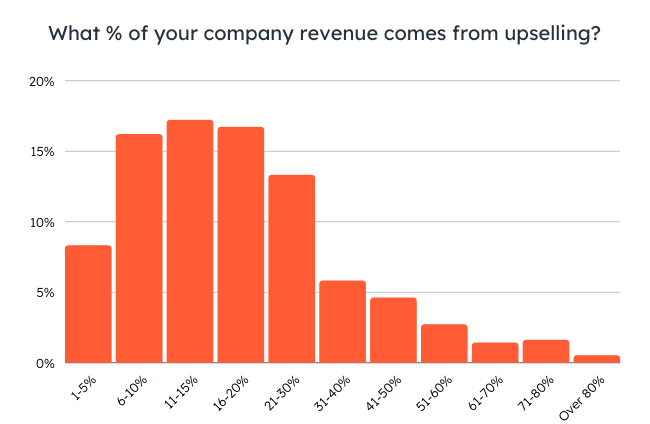
3. Improve Customer Experience and Loyalty
Keeping in mind how important it is for revenue growth to sell to existing customers, another valuable strategy for revenue growth is to focus on your customer experience.
If customers are going to be willing to buy additional products from you, their initial experience needs to be an extremely positive one. Make sure that your onboarding process is smooth and thorough, and that you’re in regular communication with the customer success team.
Customer retention strategies like giveaways and loyalty incentives can also go a long way in improving customer satisfaction.

Customer satisfaction isn’t only important for cross-selling and upselling. It also directly influences the strength of your customer referral network, which can have dramatic impacts on your revenue and overall business.

4. Invest in Technology
It’s no secret that today’s sales world is tech-forward. The vast majority of sales teams know that they need technology to stay competitive in their market. But simply owning or even using sales technology no longer makes the cut.
In order to achieve truly sustainable revenue growth, you might want to consider investing in a more modern, all-inclusive sales platform that makes collaborative communication a breeze.
Many sales and marketing teams today are relying on a pieced-together aggregation of independent sales tech tools, each designed to meet only a few unique needs at a time, often with little bridging between them. This is a recipe for organization-wide miscommunication and failed implementation.
Sales platforms specific to revenue growth (like Klearly or Revenue Architects, for example) help tie all of your many technology needs together under a single software, making it easier for your teams to collaborate, automate your processes, and improve customer satisfaction.
Tip: We developed a blueprint to help you build your tech stack based on what successful businesses are using today.
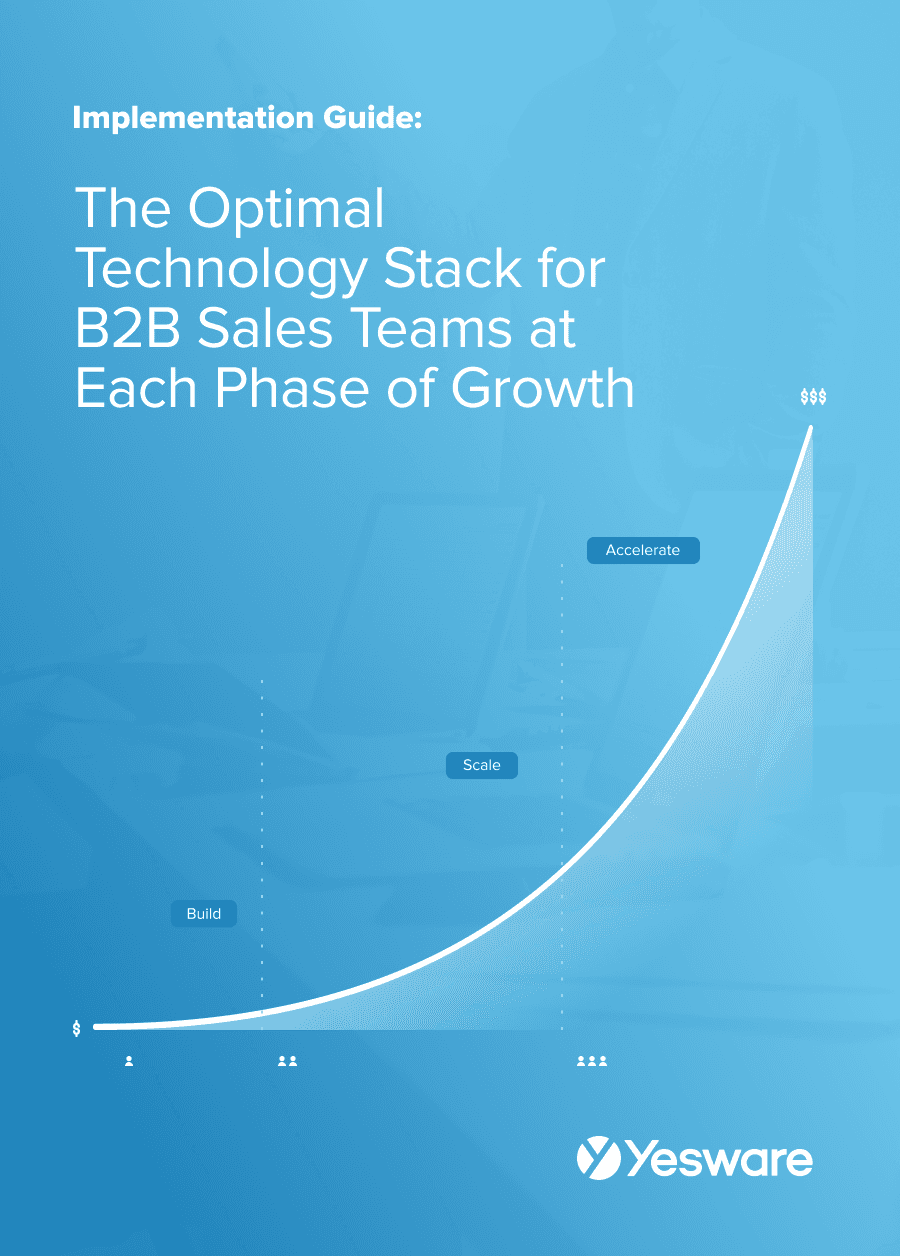 The Optimal Technology Stack for B2B Sales TeamsUsing data from the most successful business-scaling models, we designed a blueprint for the exact technology your business needs at each phase of growth.
The Optimal Technology Stack for B2B Sales TeamsUsing data from the most successful business-scaling models, we designed a blueprint for the exact technology your business needs at each phase of growth.
5. Refine Your Pricing Strategy
Sometimes revenue growth can stagnate when there’s an issue with your pricing strategy. Take a careful look at your sales data to see which of your offers currently sells best, and see if you can determine why. Does it offer a better value? Are the features more appealing? Are the customers in that bracket more satisfied and therefore making more referrals?  Identifying what pricing features work for your most popular offer can help improve your overall pricing strategy and apply it to your other offers.
Identifying what pricing features work for your most popular offer can help improve your overall pricing strategy and apply it to your other offers.
You might also consider adding other pricing reforms like product promotions or seasonal discounts, loyalty rewards, or gradually raising prices over a longer period of time to improve profit margins.
6. Launch New Products or Services
One way to potentially reach both new and existing customers is by launching new products or services. You can also achieve this on a smaller scale by adding new features to existing products.
Although creating new products (and the GTM strategies needed to launch them) may seem like a lot of effort, many companies report that adding new products to their offers had huge impacts on revenue.

New products can help expand your target market and generate renewed excitement from your existing customers.
7. Boost Your Social Media
Increasing your brand awareness can also have non-negligible impacts on your revenue growth.
One relatively easy way to boost your brand visibility is by optimizing each of your social media profiles (LinkedIn, Facebook, and Twitter are generally the most widely used, but consider the preferences of your buyer persona).
Most companies find that social selling provides a number of benefits to their sales operation, even beyond revenue growth, so it’s worth the time it takes to get your business pages up to snuff.

Check out our Ultimate Guide to Social Selling to learn more about how to get started or improve your strategy.
8. Focus On Customer Success
It’s been mentioned before, but the customer success team deserves its own individual shout-out as far as revenue growth is concerned.
Scalable, sustainable revenue growth relies more on existing customers than most salespeople would like to believe. It can be frustrating to realize that all of your efforts to close a deal can be lost with poor customer service, but that risk exists and should be enough motivation to take the time necessary to align sales and customer service.
Both teams need to approach existing customers with the mindset of treating them like potential future customers — not just keeping them complacent enough to not churn. There should be as much, if not more focus on excelling at customer service as there is on generating new leads.
9. Use SMART Goals
Revenue growth can offer sales reps a lot of insight, but it can also be a complex metric to track and analyze. That’s because many different factors can influence your rate of revenue growth.
To simplify the process and make it more tangible, try using the SMART goal framework to create and monitor sales and revenue targets.  Breaking goals down into smaller, more easily measurable components with the SMART goal framework can help marketing, sales, and customer success teams clearly identify what’s working and what’s not.
Breaking goals down into smaller, more easily measurable components with the SMART goal framework can help marketing, sales, and customer success teams clearly identify what’s working and what’s not.
10. Mergers & Acquisitions (M&A)
Last on the list is the only “inorganic” revenue growth strategy: mergers and acquisitions (M&A).

Inorganic revenue growth, like a merger or acquisition, can generate remarkably fast results but can also be risky and require a lot of upfront costs.
The most important thing to remember when it comes to revenue growth strategies is that they should be proactive.
Reactive strategies usually require teams to shift away from revenue growth and more toward profit growth, which translates quickly to cutting costs. Cost-cutting can have mild to moderate impacts on revenue growth, but only in the short term. And it usually makes employees and investors uneasy.
Proactive revenue growth strategies are about strengthening the foundation of your business so that it grows in a scalable way that precludes you from needing to cut corners in order to grow.
Revenue Growth Metrics and KPIs
Revenue Growth Rate
The revenue growth rate is a measure of how quickly your revenue has grown in one period of time compared to the previous, identical period of time.

Customer Acquisition Cost (CAC)
The customer acquisition cost is a measure of how much money is required to attract and sign one new customer, from lead generation to close.

Customer Lifetime Value (CLV)
The customer lifetime value (CLV) metric is a snapshot of how much revenue the average customer will generate for your organization over the course of their entire contract with you.
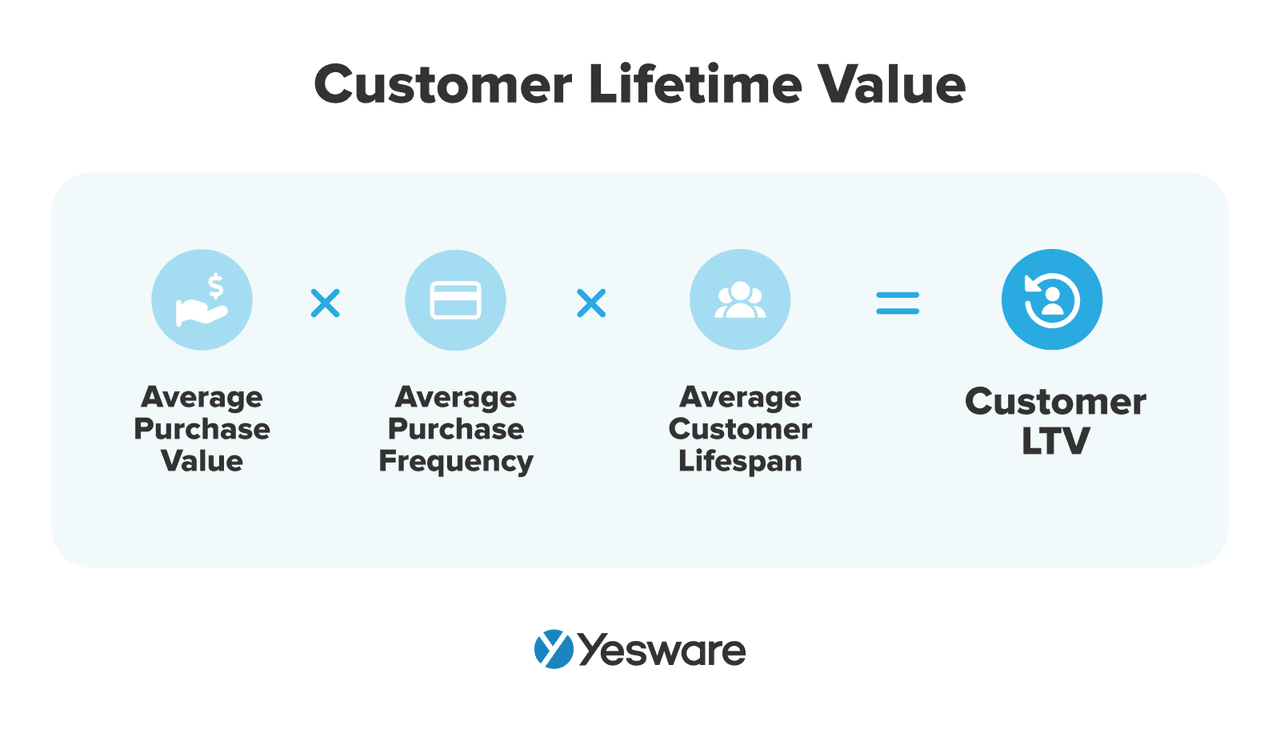
Monthly Recurring Revenue (MRR)
Monthly recurring revenue is a metric that’s especially important for SaaS companies. It shows the average amount of dollars generated per month from all of your customers.
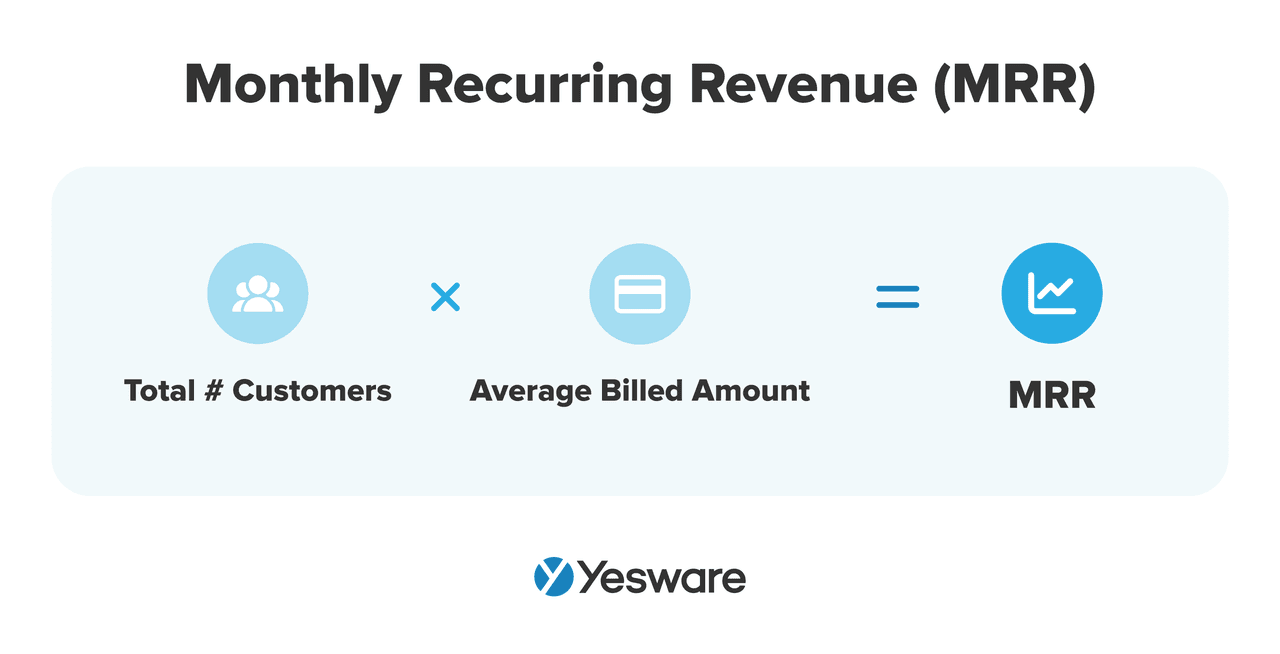
Conversion Rate
Conversion rate is a measure of how effectively your sales reps close deals. It measures how many prospects converted to paying customers at the end of the sales cycle, relative to how many leads were generated at the beginning of the sales cycle.

Customer Churn
Customer churn rate is the percentage of customers that stopped using your product or canceled their service during a given time frame.

Annual Contract Value (ACV)
Annual contract value (ACV) is a calculation of the average dollar amount that a single contract generates for your company. This is another KPI that’s especially useful for SaaS companies.

Revenue Growth FAQs
Revenue growth seems straightforward on its surface, but it’s actually quite multifaceted and can involve a lot of nuance under the surface. For that reason, there are often frequently-asked questions that arise through the process as teams begin the process of tracking their revenue growth.
What Is a Good Revenue Growth Rate?
The truth is that a “good” revenue growth rate is subjective, and depends heavily on the age of your business, your target market’s buying behavior, and your industry as a whole.
For new startups and companies in early growth stages, investors and founders usually look for a revenue growth rate of 15% or higher once things get off the ground. This seems high, but businesses are only expected to grow at this fast rate for a short time. After a period of fast exponential growth, investors may soon become more comfortable with a figure closer to 10%.
Keep in mind, though, some startups may not see any revenue growth at all for a little while. Revenue growth may be stagnant while the sales process becomes more and more optimized.
But startups that are going to make it past the first five years need to post big revenue growth numbers pretty early on into their launch, or they’ll risk burning through all of their capital with not enough ROI to show for it.
Still yet, for very mature and enterprise companies, a 2% – 3% revenue growth rate can be considered quite healthy.
Further complicating matters, SaaS has even its own standards to uphold. According to McKinsey & Co.’s “Rule of 40,” a “SaaS company’s growth rate when added to its free flow cash rate should equal 40 percent or higher.”
That being said, even McKinsey acknowledges that very few companies achieve this; it’s usually closer to 22% for companies with a revenue of at least $100 million.
In the most general terms, most C-suite executives and investors hope to see a growth rate at or above the growth rate of the economy — but even that is not a hard and fast rule.
What Is Revenue Growth Management?
Revenue growth management is the process of continuously optimizing a business’s revenue growth strategies to maximize its revenue. It requires strategic analysis and real-time insights that can help revenue growth managers identify issues and address them immediately to measure the impact of the improvement.
What Factors Influence Revenue Growth?
There are a number of factors that influence how quickly (or not) a business’s revenue grows. Follow are just a few (this is a non-exhaustive list):
Resource Usage
How effectively and efficiently your company uses your resources (financial, human, time, or otherwise) can have significant effects on your revenue growth rate.
Value/Price
Do your price points match the value of each of your offers? Are they competitive enough to attract customers, but also high enough to generate profit? Do you need to add more features to certain offers to justify the price point? Dig deep into your pricing structure — sometimes small tweaks here can make a big difference.
Onboarding Experience
Are customers experiencing the thorough onboarding experience they need to get maximum value out of your product? Does customer success keep in close contact with them, especially in the first year of their contract? A poor customer experience will not make up for an exceptional buying process, and revenue will undoubtedly suffer from a lack of customer care.
Ineffective Implementation of Strategy or Process
Sales reps who aren’t trained effectively may inadvertently hurt revenue growth by not properly adhering to strategy or process. Make sure your team is fully trained in whatever revenue growth strategies you plan to implement. Sales coaching can also go a very long way here.
Customer Churn
If your customer churn rate is too high, you’ll be fighting a losing revenue battle. High churn could be related to customer success but could also be a result of something else. If your churn rate is high, put heads together with marketing and customer success to analyze your prospect-to-customer trajectory and try to identify what went wrong and where.
Ease of Use/Product Performance
Sometimes revenue growth has nothing to do with the sales team and everything to do with the product itself. If you’re really struggling to get revenue growth up, it may be time to go back to the drawing board and tweak your actual product. It could be that it’s not perfectly meeting the needs of your target market.
Get sales tips and strategies delivered straight to your inbox.
Yesware will help you generate more sales right from your inbox. Try our Outlook add-on or Gmail Chrome extension for free, forever!
Related Articles
Casey O'Connor
Casey O'Connor
Casey O'Connor
Sales, deal management, and communication tips for your inbox

